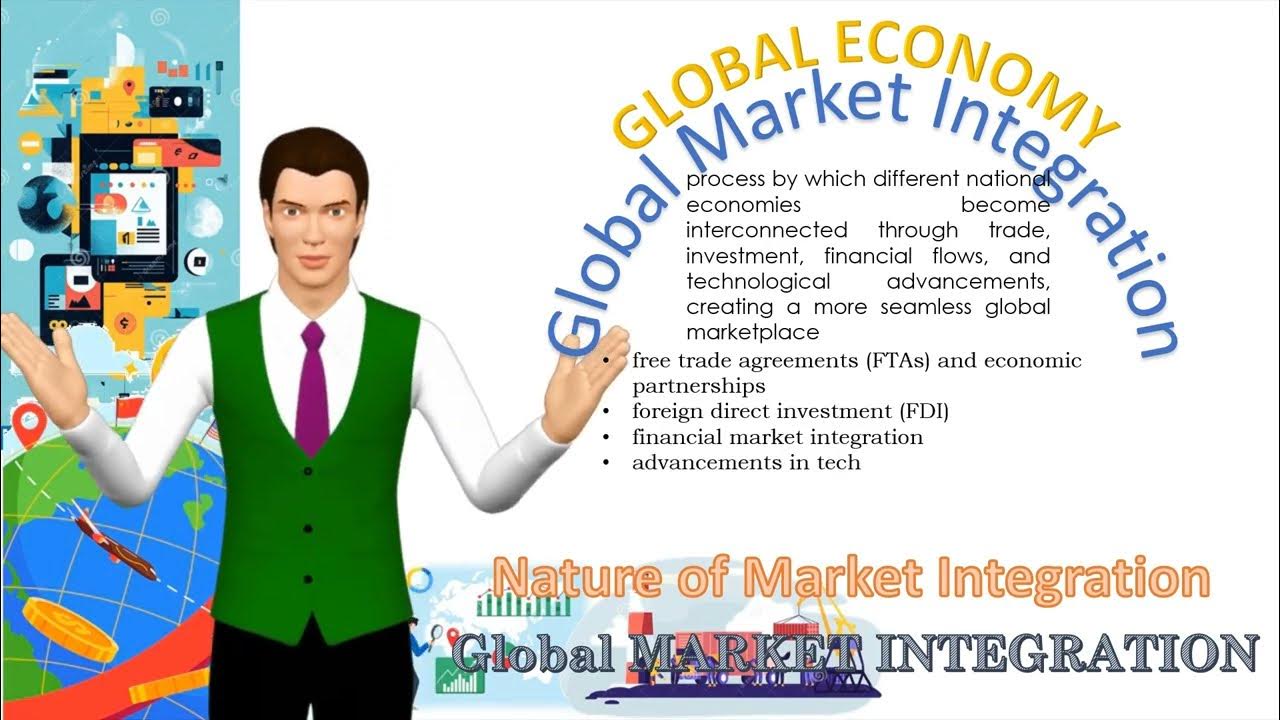The Theory of Hegemonial Stability
Summary
TLDRThe transcript discusses the theory of hegemonic stability in international political economy, where dominant global powers, or hegemons, shape the world economy after major wars. It traces Britain as the hegemon in the 19th century and the U.S. after World War II, explaining the establishment of economic regimes, such as the gold standard, the Bretton Woods system, and institutions like the IMF. The transcript also highlights challenges to U.S. dominance, debates over currency standards, and trade policy impacts like the Smoot-Hawley Tariff and GATT. Potential future shifts in global leadership are also discussed.
Takeaways
- 🌍 The theory of hegemonic stability explains that the world's largest economy, or hegemon, sets up global regimes after wars that benefit its own interests.
- 🇬🇧 In the 19th century, Britain was the global hegemon, establishing economic regimes based on the pound sterling and gold standards.
- 🇺🇸 After World War II, the U.S. became the global hegemon, setting up institutions like the IMF, World Bank, and GATT (later WTO), with the dollar as the key currency.
- 🪙 The U.S. frequently left and rejoined the gold standard in the 19th and early 20th centuries, but the 1971 Nixon shock permanently ended the link between the dollar and gold.
- ⚖️ A major political issue in the U.S. in the 19th century was the debate between the gold standard, favored by the East Coast, and a bi-metallic standard, favored by silver-rich Western states.
- 📉 One aspect of hegemonic stability theory explains the Great Depression as a result of the failure to transition global leadership from Britain to the U.S. after World War I.
- 🔄 The U.S. remains the global leader today, though it shares power with other industrialized countries through institutions like the G7.
- 📊 The chart in the lecture shows a relative decline in U.S. economic power within the G7, while other G7 countries, particularly Western Europe and Japan, have recovered post-World War II.
- 🏛️ The U.S. Smoot-Hawley Tariff of 1930 worsened the Great Depression by triggering retaliatory tariffs; this lesson influenced U.S. support for free trade post-World War II.
- 🛬 Trade disputes over non-tariff barriers, such as subsidies and standards, continue to be a major focus, exemplified by the ongoing U.S.-Europe conflict over subsidies to Airbus.
Q & A
What is the theory of hegemonic stability?
-The theory of hegemonic stability suggests that the world's largest economy, or hegemon, establishes global regimes favorable to its own interests. Hegemony often arises after a global war, where victorious or insulated countries become dominant powers.
Which country was considered the hegemon in the 19th century and after World War II?
-In the 19th century, Britain was the hegemon. After World War II, the United States became the hegemonic power.
How did the British and American global regimes differ?
-The British regime was based on the pound sterling, a partial gold standard, reduced tariffs, and rules for portfolio investment. The American regime, established after World War II, included the Bretton Woods system, the IMF, World Bank, GATT (which later became the WTO), and a monetary system based on the U.S. dollar as the key currency.
What was the 'Nixon shock,' and what impact did it have on the gold standard?
-The 'Nixon shock' in 1971 occurred when the United States disconnected the dollar from gold, effectively ending the gold standard. This allowed gold prices to float freely in the market.
What was the debate in the U.S. regarding the gold and silver standards in the 19th century?
-In the 19th century, there was a debate in the U.S. between East Coast factions that favored the gold standard and Western states, like Colorado, which supported a bimetallic standard using both gold and silver. The East Coast believed two metals would lead to irresponsible monetary policies, while proponents of silver wanted it to promote wealth creation.
How does the theory of hegemonic stability explain the Great Depression?
-The theory partly explains the Great Depression by highlighting the difficulties in transitioning leadership from Britain to the U.S. after World War I. Britain was too weak to lead, and the U.S. was unwilling to take over, leading to economic instability.
What global institutions did the U.S. establish after World War II?
-After World War II, the U.S. established the Bretton Woods system, including the IMF, World Bank, GATT (now the WTO), and an informal monetary regime based on the U.S. dollar as the key currency.
Has U.S. hegemony declined since the 1970s?
-Although there were theories of U.S. decline in the 1970s, particularly after the end of the Bretton Woods system, the U.S. remained a global leader. Power sharing with other major industrialized countries, such as through the G7 and G8, has increased.
What are non-tariff barriers, and why did they become important in trade negotiations?
-Non-tariff barriers include subsidies, government procurement, standards, customs valuation barriers, and licensing barriers. They became important as countries reduced tariffs, leading to the substitution of non-tariff barriers to protect domestic industries.
What was the significance of the Airbus-Boeing trade dispute?
-The Airbus-Boeing dispute highlights tensions over subsidies in international trade. The U.S. claimed that Europe was unfairly subsidizing Airbus, which had displaced McDonnell Douglas and became Boeing's major competitor.
Outlines

このセクションは有料ユーザー限定です。 アクセスするには、アップグレードをお願いします。
今すぐアップグレードMindmap

このセクションは有料ユーザー限定です。 アクセスするには、アップグレードをお願いします。
今すぐアップグレードKeywords

このセクションは有料ユーザー限定です。 アクセスするには、アップグレードをお願いします。
今すぐアップグレードHighlights

このセクションは有料ユーザー限定です。 アクセスするには、アップグレードをお願いします。
今すぐアップグレードTranscripts

このセクションは有料ユーザー限定です。 アクセスするには、アップグレードをお願いします。
今すぐアップグレード5.0 / 5 (0 votes)






